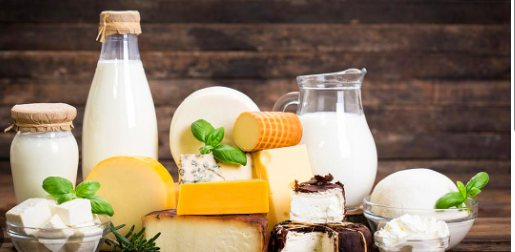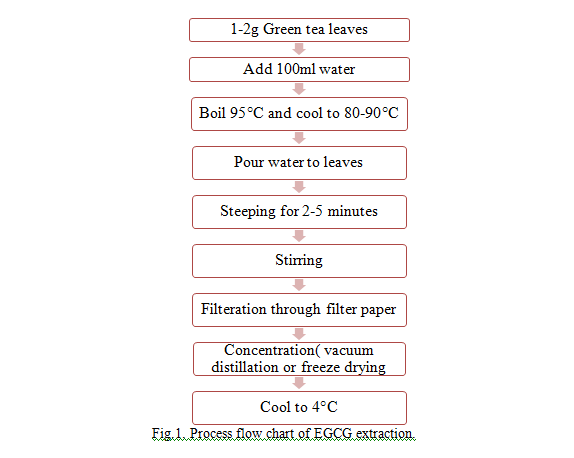
Shiv and Sharanagouda B
Research scholar, Department of Dairy Technology, College of Dairy Science and Technology, Lala Lajpat Rai University of Veterinary and Animal Sciences, Hisar, Haryana, India.
Professor and Head, Department of Dairy Technology, College of Dairy Science and Technology, Lala Lajpat Rai University of Veterinary and Animal Sciences, Hisar, Haryana, India.
Corresponding Author mail id: shiv000mangal@gmail.com
Introduction:
High amount of free radical generation in human body leads to problem of oxidative stress and related diseases in humans. Excess number of free radicals can metabolize nutrients available in body and adversely affect the metabolism inside human body.This can cause methylation in body which leads to early ageing and other metabolic disorders (Evstigneeva et al., 2016). India is the largest producer of milk with 239 million tons and per capita consumption of 444g/day(Keelery, 2025). Milk can be consumed directly in liquid form or it may convert into various products like Dahi, yogurt, sweets and ghee etc. which contains a large amount of nutrients. But the major limitation of dairy products is its perishability due to increased risk of oxidation which reduces the keeping quality of dairy products (Mahajan et al., 2017). An addition of antioxidant to dairy products is a safe and better option to enhance the keeping quality of dairy products. Antioxidant reduce the generation of free radicals in our body and also suppress the problem caused by free radicals by making it stable. Green tea is an example of such bioflavonoids which contains various catechins like epigallocatechin gallate (EGCG), ECG, EG and many more, out of which EGCG covers 50% of total catechin present in green tea (Evstigneeva et al., 2016). In this article, the main focus is given on effect of EGCG incorporation on the health benefits as well as keeping quality of dairy products.
What is EGCG?
EGCG is one of main catechin found in green tea having a molecular weight of 457.4g/ml (NCBI, 2024). This catechin consist of eight hydroxyl group which helps in attracting more free radicles and convert these into stable form. Different sources are available for extraction of EGCG with a variable content such as green tea (7380mg/100g), white tea (4245mg/100g, Black tea (936mg/100g) and oolong tea with 3400mg/100g (Bhagwat et al., 2011). Beyond its various benefits, a safe intake is necessary to get optimized results. European food safety authority provides that less than 800mg/day is safe to consume which does not cause liver damage (EFSA, 2018).
EGCG extraction fromGreen tea:
Solvent extraction method is simplest technique to extract EGCG from green tea and a detailed procedure is as follows:

Fig.1. Process flow chart of EGCG extraction.
Procedure:Take green tea leaves in ratio of 1:20 of extraction solvent (typically water).Boil water and cool slightly to around 80-90°C (175-195°F). Pour the hot water over the green tea leaves in a container.Steep the leaves for about 2-5 minutes. Stir the mixture gently to ensure good extraction.Strain the tea leaves from the liquid using a fine mesh strainer or filter paper to obtain a clear extract.If a more concentrated extract is desired, the liquid can be evaporated under reduced pressure (vacuum distillation) or freeze-dried to obtain a powder.Store the extract in a cool, dark place or refrigerate to prevent degradation (Gadkari and Balaraman, 2015).
Effect of EGCG on keeping quality of Dairy and food products:
- Antimicrobial Activity:
Tea compounds characterized by the highest antioxidant power are simultaneously the most effective as microbiological inhibitors. The antimicrobial activity of non-fermented tea is higher than that of semi-fermented or fermented tea(Almajano et al. 2008).
Yogurt: EGCG incorporation has been shown to inhibit the growth of spoilage microorganisms, such as Pseudomonas spp. and Lactobacillus spp., thereby extending the shelf life of yogurt. The antioxidant properties of EGCG also help in maintaining the quality of yogurt by reducing lipid oxidation (Wajs et al., 2023).
Milk: EGCG can inhibit the growth of pathogenic bacteria like Escherichia coli and Staphylococcus aureus in milk, reducing the risk of spoilage and extending shelf life. EGCG addition to milk helps in preserving the quality of milk by delaying oxidative changes in milk but the major problem is its reduced bioavailability in milk and less stability with casein micelles. These problems can be resolved by using different methods such as modified EGCG structure, encapsulation etc(Chenet al., 2020).
- Antioxidant Activity:
Addition of antioxidant components of plant origin to the food products, including dairy, is one of the ways to prolong the products’ shelf-life due to the inhibition of the oxidation processes (Evstigneeva et al., 2016). The antioxidant effectiveness depends on the tea variety and the content of EGCG is very important. Oolong and green tea has high levels of EGCG and epigallocatechin (EGC), but the content in black tea is much lower (Almajano et al. 2008).
Cheese: The addition of EGCG can help in reducing the oxidation of fats in cheese, which is a common cause of spoilage. This helps in maintaining the flavor and quality of cheese for a longer time (Mahajan et al., 2017).
Butter: EGCG can act as an antioxidant, reducing the rancidity of butter and thus extending its shelf life (Çakmakçı et al., 2023).
Oils and Fats: EGCG can help in preventing the oxidation of oils and fats, which is a major cause of spoilage. This is particularly useful in products like mayonnaise and salad dressings (Rashidinejad et al., 2016).
- Sensory and Nutritional Aspects:
In food systems, the interactions between phenolic compounds and proteins cannot be excluded during storage and processing, and they may influence the color, aroma and taste of foods, which may cause desirable or undesirable effects (Wei et al., 2015). EGCG can have a bitter taste, which might affect the flavor profile of the product. Therefore, the concentration of EGCG needs to be optimized to balance between extending shelf life and maintaining sensory qualities. The role of Phenolic Compounds (PCs) in astringency has been established and is thought to entail the PC associated precipitation of salivary glycoproteins and mucopolysaccharides onto the tongue, resulting in the development of a feeling of constriction, roughness and dryness on the palate (O’connell & Fox, 2001).
Advantages of Incorporating EGCG in Dairy products:

- Enhanced Antioxidant Content: EGCG helps combat oxidative stress in the body, potentially reducing the risk of chronic diseases linked to free radical damage. Covalent protein-EGCG complexes exhibited much stronger antioxidant activity in milk products (Wei et al., 2015).
- Synergistic Health Benefits: EGCG has antioxidant, anti-inflammatory, and potentially anti-cancer properties. When combined with the nutrients found in milk, such as calcium and vitamin D, it can create a synergistic effect that enhances overall health and wellness (Wróblewska et al., 2023).
- Potential Functional Food Application: EGCG-enriched milk products can be marketed as functional foods, offering consumers a convenient way to incorporate health-promoting compounds into their daily diet(Wróblewska et al., 2023).
- Improved Taste and Palatability: Depending on the formulation, EGCG can be added to milk products without significantly altering taste or texture. This makes it easier for consumers to adopt and enjoy these fortified products(Wajs et al., 2023).
- Consumer Demand for Healthier Options: With increasing consumer awareness of health and wellness, there is a growing demand for products that offer additional health benefits beyond basic nutrition. EGCG-enriched milk products can meet this demand by providing a natural source of antioxidants in a familiar and widely consumed beverage (Wajs et al., 2023).
- Reduced Methylation: By inhibiting DNMTs, EGCG can potentially reduce harmful methylation, which has been associated with various diseases. EGCG inhibit DNA methyltransferases (DNMTs), the enzymes responsible for adding methyl groups to DNA. By inhibiting these enzymes, EGCG can help reduce methylation. (Mereles & Hunstein, 2011)
Conclusion:
This article focuses on the addition of antioxidants like EGCG in various dairy products which not only reduce the effect of free radical in human body but also impart a characteristic flavour to the products. But the limitation is bioavailability of catechins in human body which can be improved by employing new techniques of incorporation such as encapsulation of catechins and formulation of products with high fat, it may lead to enhanced bioavailability of EGCG in human body. Future development of functional food including EGCG as an ingredient is required to overcome the problems arising in dairy products as well as in food products.
References:
Almajano, M. P., Carbo, R., Jiménez, J. A. L., & Gordon, M. H. (2008). Antioxidant and antimicrobial activities of tea infusions. Food chemistry, 108(1), 55-63.
Bhagwat, S., Haytowitz, D. B., & Holden, J. M. (2011). USDA database for the flavonoid content of selected foods, release 3. US Department of Agriculture: Beltsville, MD, USA, 159.
Çakmakçı, S., Gülçin, İ., Gündoğdu, E., Ertem Öztekin, H., & Taslimi, P. (2023). The comparison with commercial antioxidants, effects on colour, and sensory properties of green tea powder in butter. Antioxidants, 12(8), 1522.
Chen, Y., She, Y., Shi, X., Zhang, X., Wang, R., & Men, K. (2020, August). Green tea catechin: does it lower blood cholesterol?. In IOP Conference Series: Earth and Environmental Science (Vol. 559, No. 1, p. 012027). IOP Publishing.
EFSA ANS Panel. Scientific Opinion on the safety of green tea catechins. EFSA Journal 2018;16(4):5239 https://doi.org/10.2903/j.efsa.2018.5239.
Gadkari, P. V., & Balaraman, M. (2015). Catechins: Sources, extraction and encapsulation: A review. Food and Bioproducts Processing, 93, 122-138.
Evstigneeva, T., Skvortsova, N., & Yakovleva, R. (2016). The application of green tea extract as a source of antioxidants in the processing of dairy products. 14, 1284-1298.
Keelery, S. (2025). Volume of milk produced across India in financial year 2024, by leading state. Retrieved 25/03/2025 from https://www.statista.com/statistics/622808/milk-production-by-state-india/
Mahajan, D., Bhat, Z. F., & Kumar, S. (2017). Epigallocatechin-3-gallate. Nutrition & Food Science, 47(2), 191-203. https://doi.org/10.1108/NFS-06-2016-0074
Mereles, D., & Hunstein, W. (2011). Epigallocatechin-3-gallate (EGCG) for clinical trials: more pitfalls than promises?. International journal of molecular sciences, 12(9), 5592-5603.
National Center for Biotechnology Information (2024). PubChem Compound Summary for CID 65064, Epigallocatechin Gallate. Retrieved July 25, 2024 from https://pubchem.ncbi.nlm.nih.gov/compound/Epigallocatechin-Gallate.
O’connell, J. E., & Fox, P. F. (2001). Significance and applications of phenolic compounds in the production and quality of milk and dairy products: a review. International Dairy Journal, 11(3), 103-120.
Rashidinejad, A., Birch, E. J., & Everett, D. W. (2016). The behaviour of green tea catechins in a full-fat milk system under conditions mimicking the cheesemaking process. International Journal of Food Sciences and Nutrition, 67(6), 624-631.
Wajs, J., Brodziak, A., & Król, J. (2023). Shaping the physicochemical, functional, microbiological and sensory properties of yoghurts using plant additives. Foods, 12(6), 1275.
Wei, Z., Yang, W., Fan, R., Yuan, F., & Gao, Y. (2015). Evaluation of structural and functional properties of protein–EGCG complexes and their ability of stabilizing a model β-carotene emulsion. Food Hydrocolloids, 45, 337-350.
Wróblewska, B., Kuliga, A., & Wnorowska, K. (2023). Bioactive Dairy-Fermented Products and Phenolic Compounds: Together or Apart. Molecules, 28(24), 8081.



















